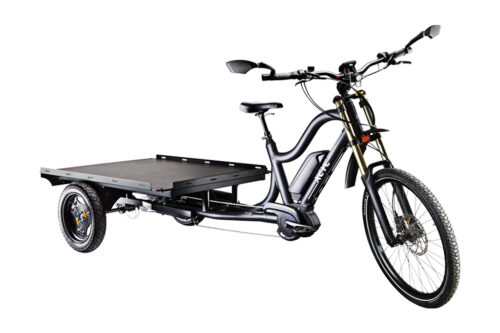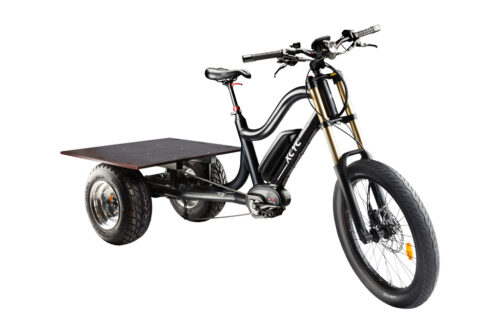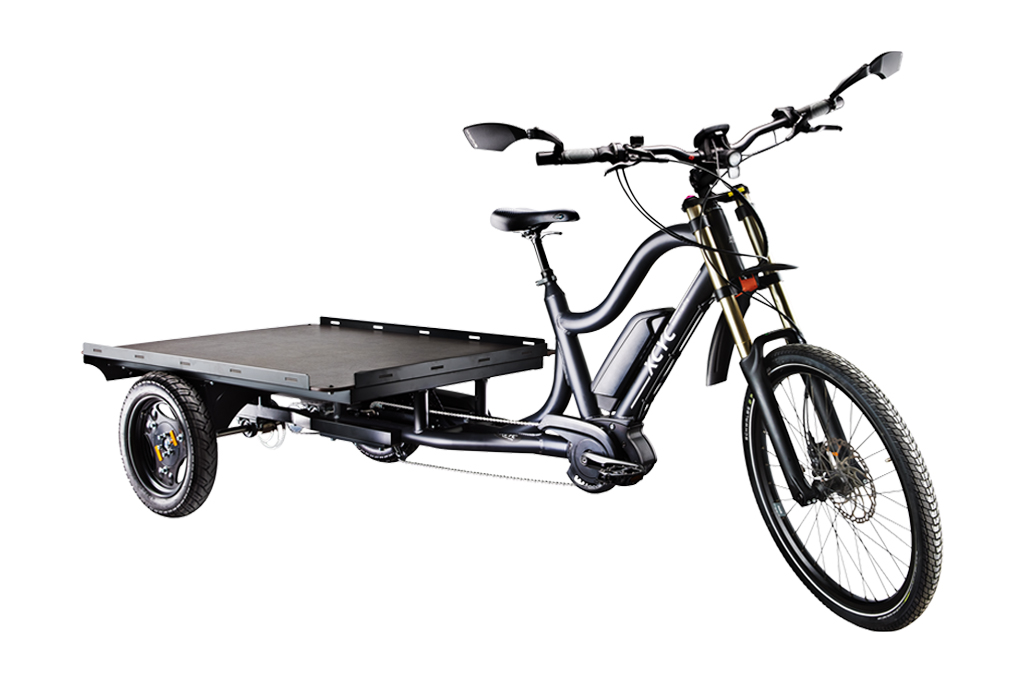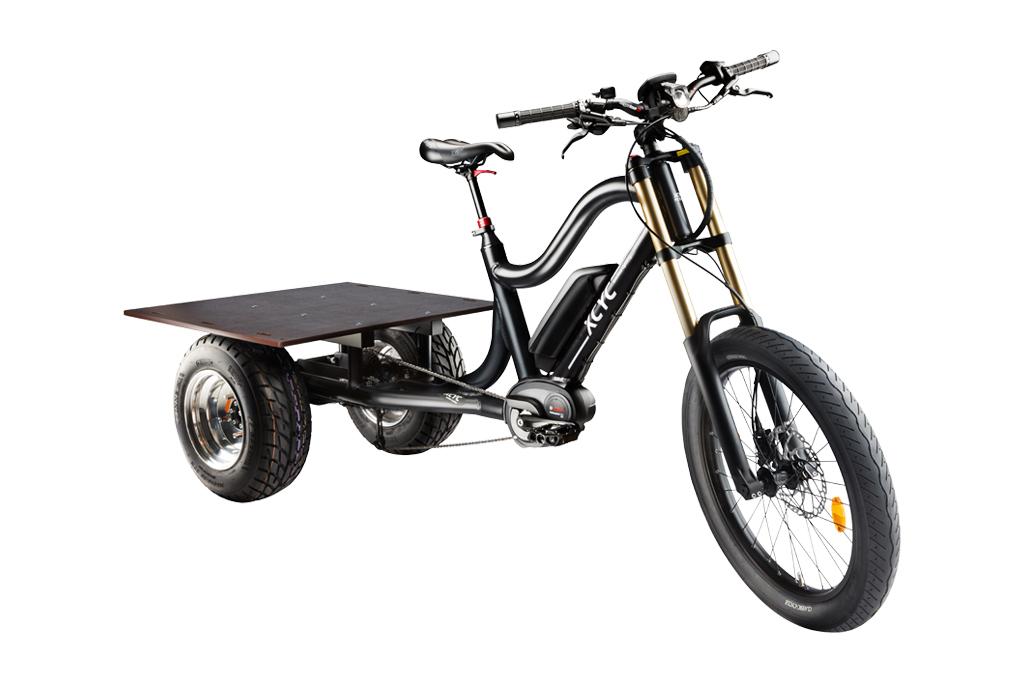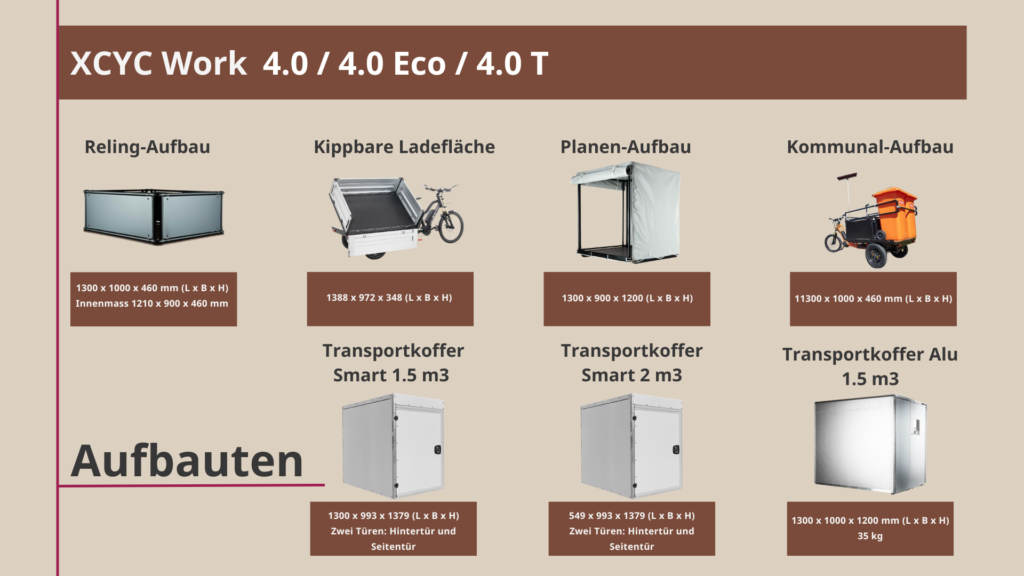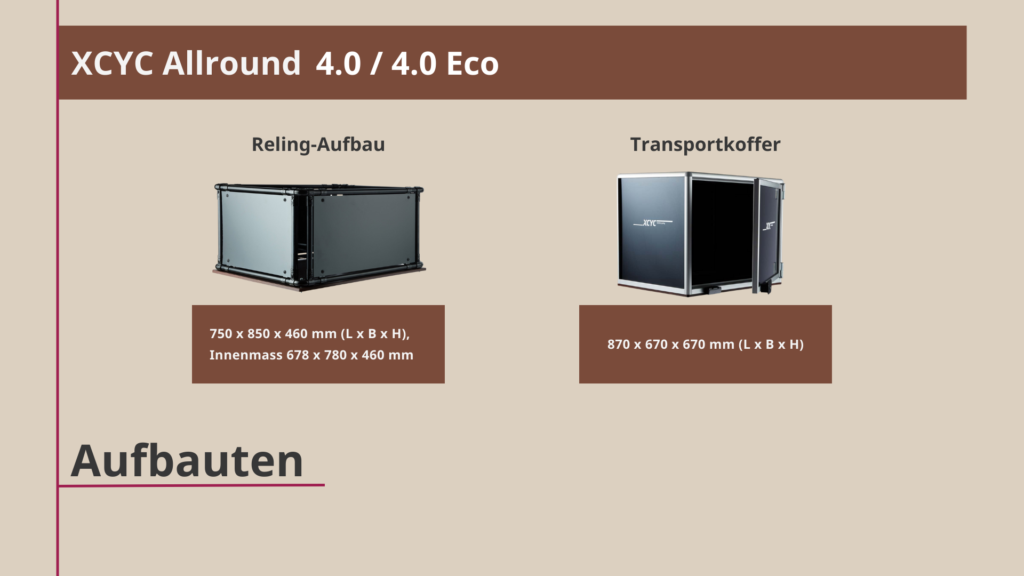Transport with the cargo e-bike: Optimum loading, payload calculation and permissible total weight
- Home
- E-bike knowledge
- Cargo e-bike payload – How to calculate the maximum payload and load your e-cargo bike correctly
‘How much can you really transport without overloading the cargo e-bike?’ Many people who transport goods, tools or parcels on a daily basis ask themselves this question. The answer depends not only on the cargo bike itself, but above all on the right load – and this is where it gets interesting.
A well-loaded cargo e-bike not only rides more stably, but also protects the brakes, tyres and motor. If the permissible total weight is exceeded or the weight is unevenly distributed, the braking distance increases, the steering becomes spongy and wear increases noticeably. This can quickly become expensive, especially for commercial users – not to mention possible fines.
Additionally new regulations will apply in Switzerland from July 2025: Cargo e-bikes up to 250 kg total weight will remain license-free, while heavier models up to 450 kg will require a category M driver’s license.
In this article, you will find out how to calculate the payload of your cargo e-bike, what you should pay attention to when distributing the weight and which legal requirements you need to be aware of. Practical tips on optimal loading ensure that every journey remains safe, efficient and compliant.
Table of Contents
What is the permissible total weight for cargo e-bikes?
Definition and meaning
When it comes to the transport capacity of a cargo e-bike, you quickly come across the term ‘permissible gross weight’ (GVW). But what does this actually mean?
Quite simply, the permissible total weight describes the maximum weight that your cargo e-bike can carry – including the bike, rider and payload. If this limit is exceeded, it is not only riding safety that suffers, but also the technology. The frame, brakes and motor are designed for a specific load. Overloading leads to faster wear and increases the risk of accidents.
Does the gross vehicle weight rating apply with or without the driver?
This question always causes confusion. The answer is clear: the gross vehicle weight rating always includes the driver.
If you don’t take the rider’s weight into account, you will quickly overestimate the transport capacity – and risk overloading the cargo bike without realising it.
Important terms simply explained
When it comes to the workload of cargo e-bikes, terms such as tare weight, load capacity and total weight keep popping up. But what exactly do they mean – and why are they so important for safe transport?
Empty weight, workload & load capacity – What’s the difference?
- Tare weight: This is the unladen weight of the bike and the body, i.e. without rider, load or accessories.
- Workload: Often confused with the load capacity, the workload describes the maximum amount your bike can carry – depending on the permissible total weight, the bike’s own weight and the rider’s weight.
- Load capacity: This describes the actual load – transported goods (parcels, tools or shopping) or passengers.
Why is the workload so important in everyday life?
The workload determines whether your cargo e-bike is safe, stable and efficient when travelling. If you exceed this limit, you are taking a risk:
- Unstable driving behaviour: Especially when you’re taking curves or during sudden braking manoeuvres.
- Longer braking distances: More weight means you need more time to stop.
- Technical damage: tyres, frame and engine are subjected to greater stress.
Every kilo counts, especially in commercial use. Keeping an eye on the workload not only makes driving safer, but also avoids expensive repairs and legal problems – a point that will become even more important in Switzerland from July 2025 with the new weight classes.
Our XCYC cargo bikes at a glance: Maximum authorised weight
| Weight (without superstructure) | Maximum authorised total weight DE & EU | Maximum authorised total weight CH | ||
|
XCYC Work Models |
100 kg | 300 kg | 200 kg | |
|
XCYC Allround Models |
58 kg | 250 kg | 200 kg |
Legal regulations & manufacturer’s specifications
The workload of a cargo e-bike depends not only on the model, but also on the legal requirements. While in the EU and Germany it is primarily the manufacturer’s specifications that are decisive, new regulations defining clear weight classes will come into force in Switzerland from 1 July 2025.
Legal regulations on the workload of cargo e-bikes in Germany
In Germany, there is no standardised legal limit on the workload for cargo e-bikes. Instead, the maximum permissible payload is specified by the manufacturers and depends on the frame, brakes and overall design of the bike.
Nevertheless, there are some general rules:
StVZO § 34: Technical limits
According to the Road Traffic Licensing Regulations, the maximum authorised mass of a vehicle must not be exceeded. Overloading can impair driving safety and result in fines for commercial use.
Important: If you exceed the manufacturer’s maximum load specifications, you not only risk damage to the bike, but also penalties and loss of insurance cover.
New regulations in Switzerland from July 2025
From 1 July 2025, Switzerland will distinguish between light and heavy cargo e-bikes:
Light cargo e-bikes (light motorised bikes):
- Permissible total weight: up to 250 kg
- Driving licence-free from the age of 16 (or from 14 with category M)
- Ideal for urban transport and private use
- Use of cycle path obligatory (if available)
Heavy cargo e-bikes (heavy motorised bicycles):
- Permissible total weight: up to 450 kg
- Category M driving licence required
- Use of cycle paths is mandatory, but there will also be more relaxed cycle path regulations: Heavy cargo bikes will be able to move more freely in traffic. Local authorities will decide where cycle paths must be used.
- Approved for use on public roads
Calculating workload – this is how it works step by step
How much weight can you really transport without overloading your cargo e-bike? The answer lies in the payload – i.e. the maximum load weight that your bike can carry.
The formula for calculating the workload
The payload is calculated from the gross vehicle weight rating (GVWR) minus the bike’s own weight and the rider’s weight:
Payload = GVW – tare weight – driver weight
For example:
Permitted total weight: 250 kg
Weight of the bike: 100 kg
Rider weight: 80 kg
Workload: 250 kg – 100 kg – 80 kg = 70 kg
Find the perfect cargo e-bike for your transport needs
Whether for daily company transport, urban deliveries or private use – the right cargo e-bike makes all the difference.
The XCYC-Models offer the right solution for every transportation task:
XCYC Work: Robust design, high workload up to 200 kg.
XCYC Allround: Leightweights, flexible, with a workload up to192 kg.
Thanks to their sturdy frames, powerful motors and ergonomic design, these bikes are durable and comfortable – even when fully loaded.
Request an appointment!
Not sure which cargo e-bike best suits your transportation needs? We’ll be happy to help you:

